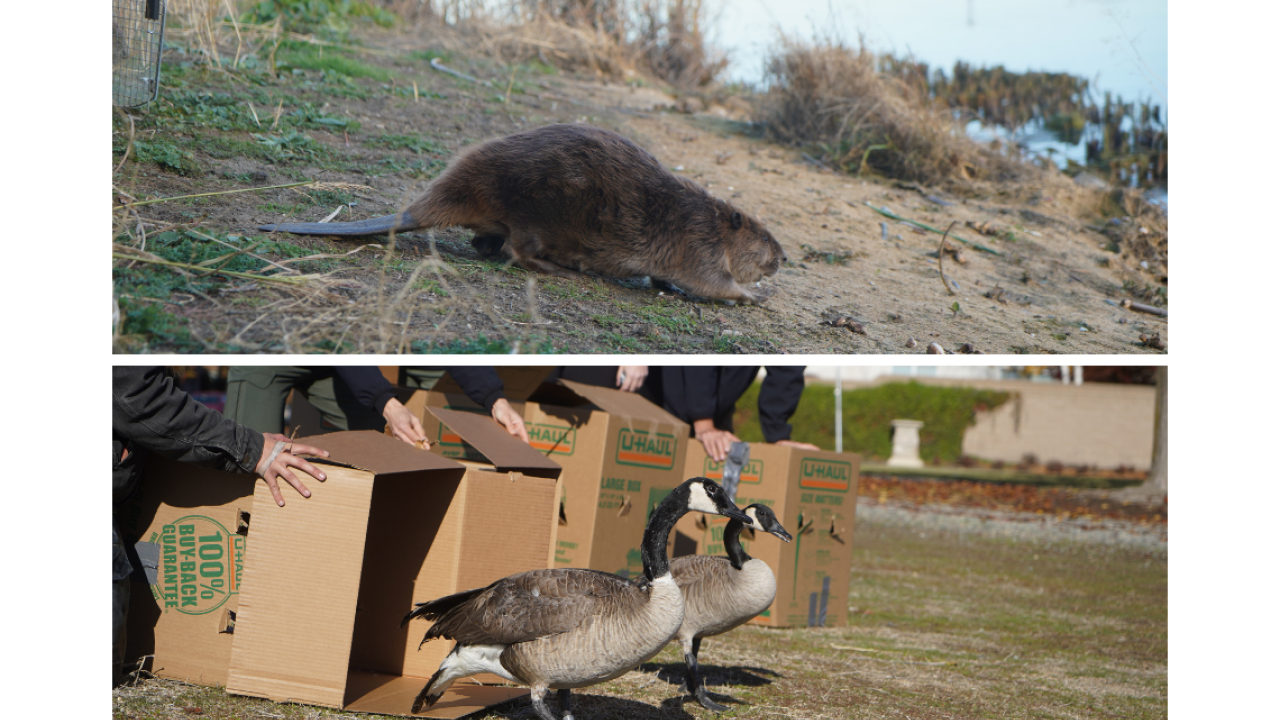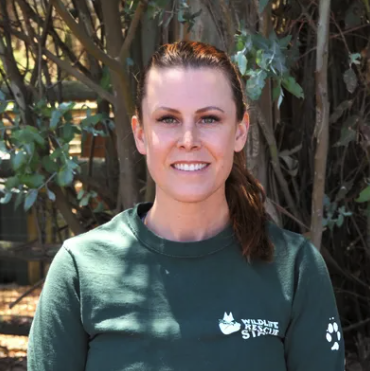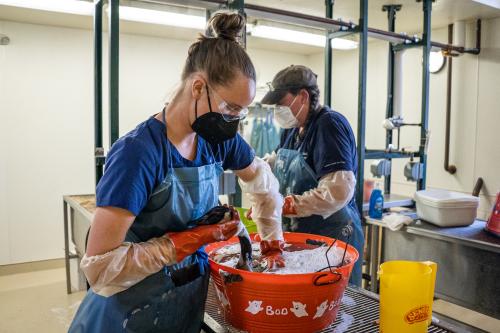
An OWCN response through the eyes of new responders
Our blog has covered various OWCN Management Team perspectives on last year's Tanzanite Park spill response. Now it is time to hear from responders from some of our OWCN Member Organizations. We asked Megan from Sonoma Wildlife Rescue and Mackenzie from International Bird Rescue to share some of their experiences during the Tanzanite Park response. As experienced wildlife caregivers, but brand new OWCN responders, we think their stories offer a unique perspective into what it's like to respond to an oil spill as part of the OWCN.

My name is Megan Brown-Herrera and I am the Supervising Animal Care Technician at Sonoma County Wildlife Rescue in Petaluma, California. During the Tanzanite Park spill response, I was one of the chief animal caretakers for the contaminated beaver family. Within our organization, I am one of the leads for beaver behavior, management and care. I was surprised that after an oil spill contamination, waterways can be cleaned and restored, allowing animals to safely return home in a reasonable amount of time. I was also amazed at how kind and supportive everyone was in the spill cleanup, despite the long hours and stress. I was fortunate to receive an invitation to International Bird Rescue in Fairfield to help with the first beaver sedation and bath, where we removed diesel oil from its coat and body. I learned much about the bathing process and the work it takes to help animals after contamination. I learned how dangerous oil can be to humans and animals if the fumes are breathed in or the oil gets on exposed skin. It was quite a process suiting up for the baths and procedures after an oil spill!
While I enjoyed the whole experience, the most challenging part was when two of the beavers did not survive. Working with the animals daily, I often find it difficult not to get attached. I imagine I’m not alone in these feelings with my animal loving peers. I felt welcome and supported by OWCN and International Bird Rescue as a consultant on beaver sedation and care. I was nervous stepping into this role since I had not met anyone from either organization before, but I was welcomed with open arms. We worked together like one big family.
I am so grateful to have been part of an oil spill cleanup. I wear my OWCN hat proudly every time I go running in my neighborhood. It feels rewarding and truly special to assist such an amazing organization to help save wildlife one oil spill at a time.

My name is Mackenzie Preble and I’ve been with International Bird Rescue (IBR) since January 2021. I started as a part-time Wildlife Rehabilitation Technician but have since become a full-time employee working 50% as a technician and 50% as a program support coordinator.
The Tanzanite Park spill response was a relatively small response with a small rehabilitation team. As such, the tasks and responsibilities were often interchanged from day to day and even within the same day. Overall the roles filled on a given day were intake and processing, pre-wash care, and wash and conditioning. The tasks involved in intake and processing included screening for Highly Pathogenic Avian Influenza (HPAI), physical and medical evaluation, and oiled animal processing. Pre-wash care involved daily physical examinations, enclosure cleaning, and feeding. Wash and conditioning involved preparing for and performing washes, as well as caring for birds post-wash, which included evaluation of waterproofing once dry.
This was the first spill response at the San Francisco Bay Oiled Wildlife Care and Education Center (SFBOWCEC) that I had experienced. During my time at IBR, I’ve encountered many individual oiled birds, which are typically oiled with thick patties of crude oil. Their oiling is very obvious. The Tanzanite Park spill involved diesel, which definitely had an aroma, but could be difficult to visually evaluate. This was surprising but the more birds we processed, the easier it got. I was also able to learn from the more experienced members of the rehabilitation team by discussing each bird with them or observing their processing techniques. Additionally, the birds brought to our clinic during non-spill/normal operations are usually skinny and very weak. This is because they have been stranded or injured for several days before being rescued. During the Tanzanite Park spill, the oiled wildlife (mostly Canada Geese) rescued by the response team was quickly transported to us. This meant they were well-fed and strong. This was surprising at first and I quickly adjusted my tactics to safely handle them. And lastly, I had never seen a beaver in person before. I was surprised how big they were!
My existing skills for and familiarity with the species being rescued was absolutely helpful. It was also helpful that IBR had been screening birds for HPAI for several months already, so we were all confident in our ability to identify symptoms and keep all birds at our clinic safe. I now know more of what to expect when OWCN is activated for a response and will be working from SFBOWCEC. I learned how to evaluate oiling from a different type of oil. I learned how to feather test to see what proportion of soap will remove contaminants, if needed. And I learned that you can draw blood from a beaver’s tail.
My favorite part was working with each member of the OWCN team and getting to know them. I felt the mutual respect and enjoyment of learning from each other. My least favorite part was cleaning up after Canada Geese - they are really good at making a very big mess!
Big THANK YOU to Megan, Mackenzie, and all of the OWCN responders who participated in the Tanzanite Park response!!
